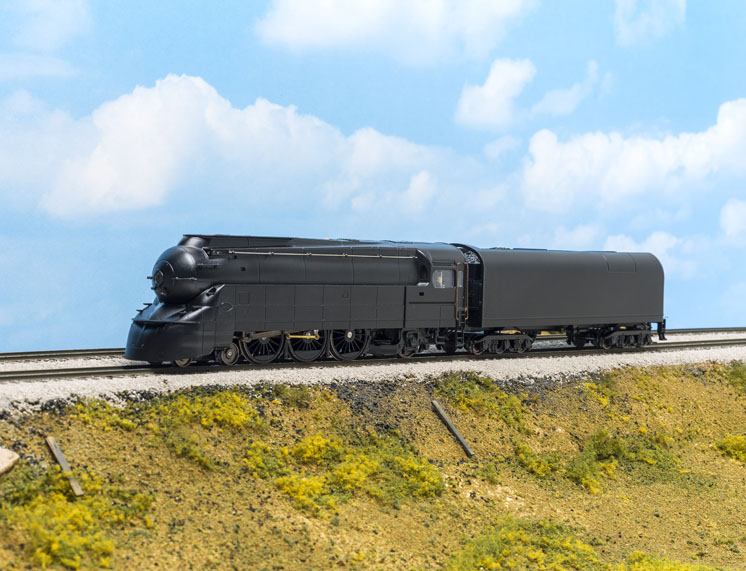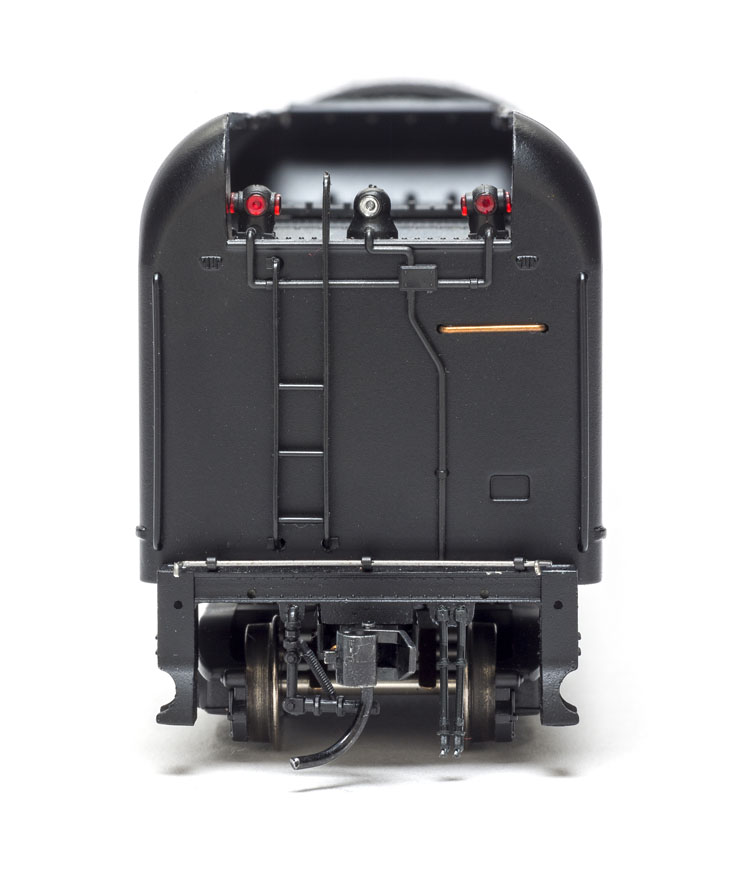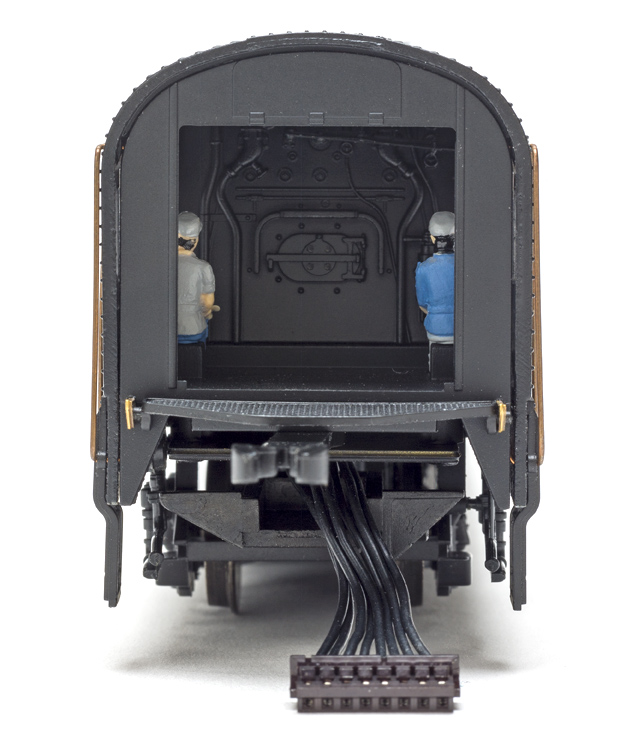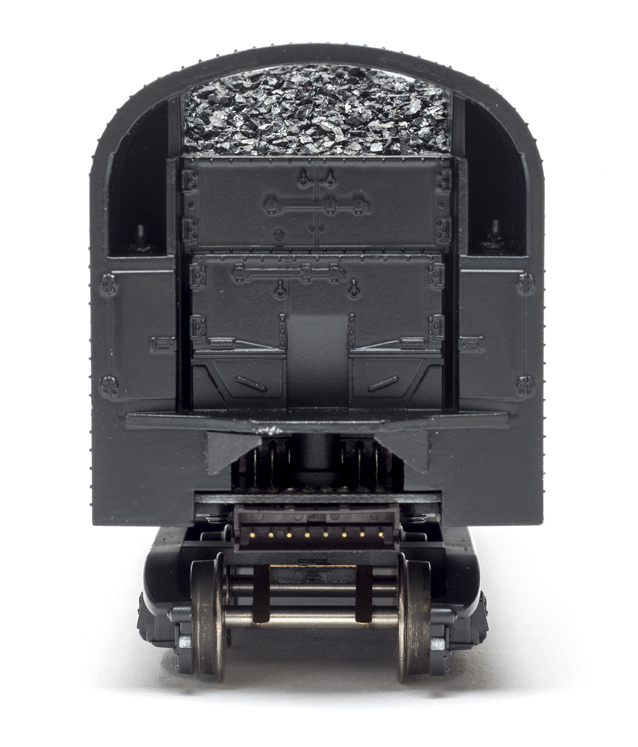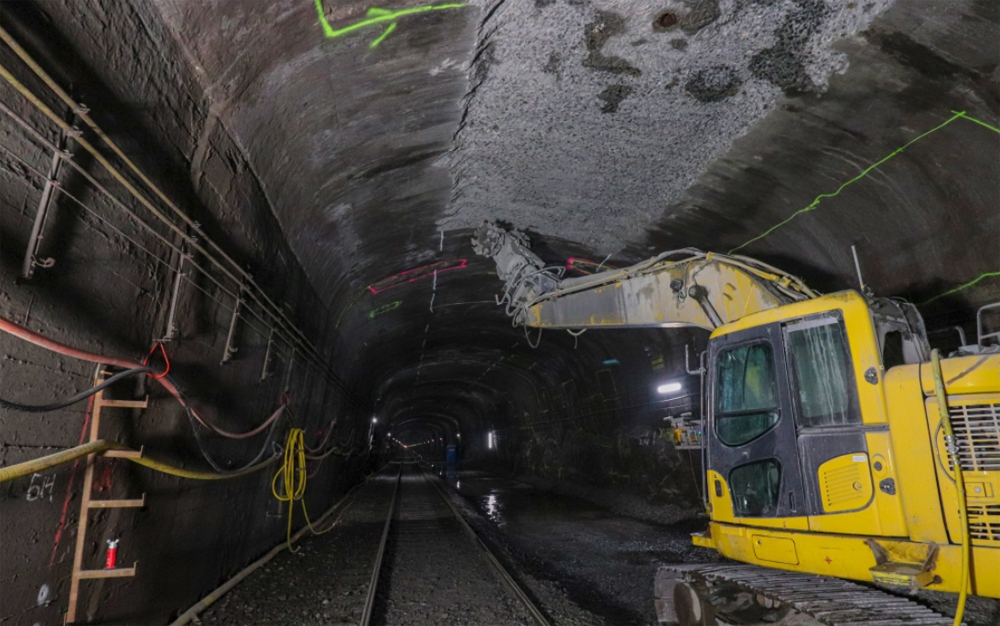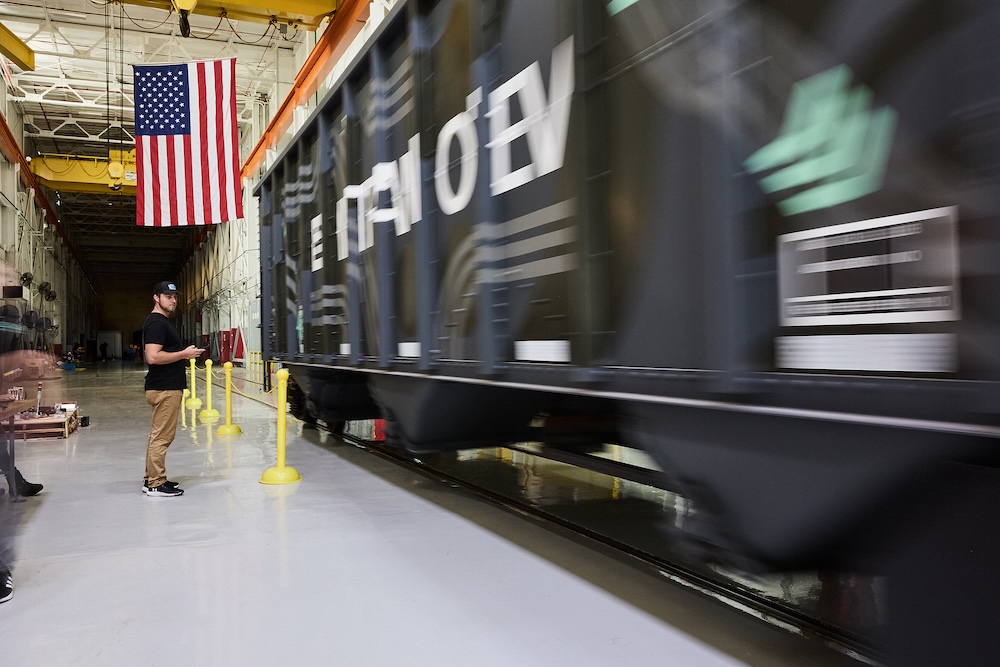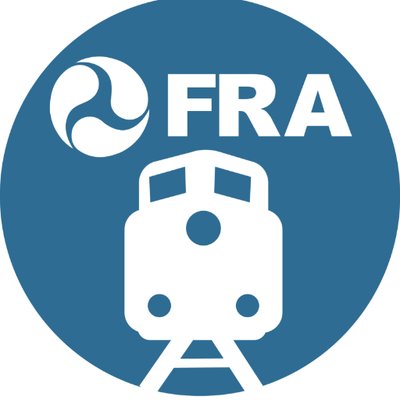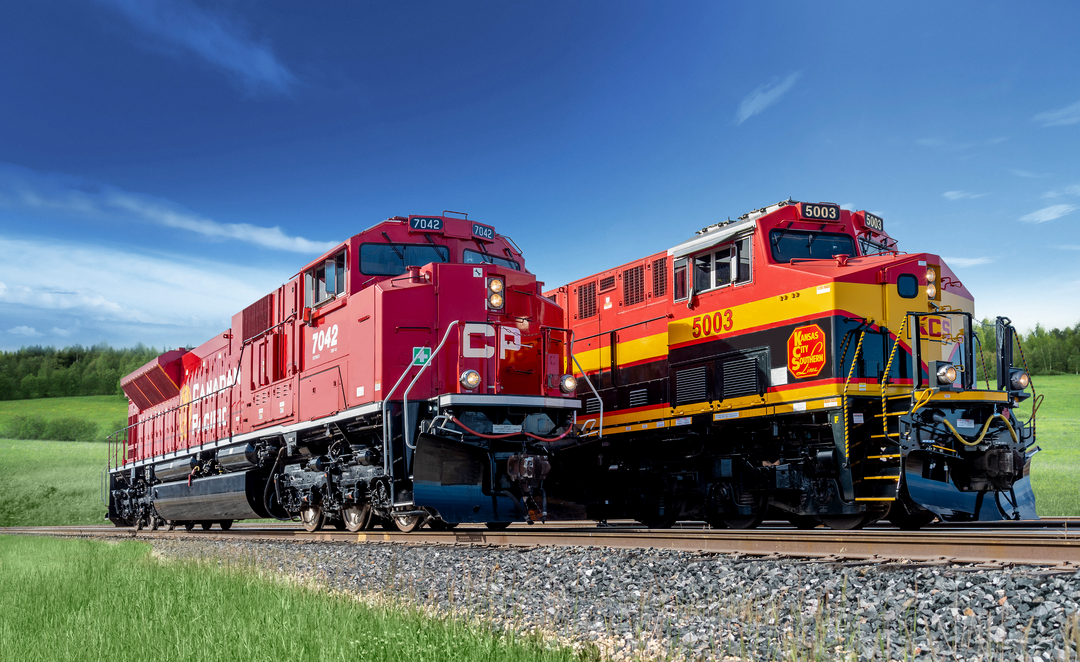It was a lucky day for the Pennsy fans around the Model Railroader offices this month. Broadway Limited Imports sent us an undecorated pre-production engineering sample of the firm’s new HO scale model of the Pennsylvania RR’s first streamlined K4s 4-6-2 steam locomotive, no. 3768. And rather than wait for the production model to become available, we wanted to share this sneak preview with our readers.
Part of BLI’s Paragon3 series, the model features a dual-mode decoder with sound, light, and smoke effects that operate on Digital Command Control (DCC) and direct-current (DC) layouts.
The prototype. The PRR streamlined five of its 425 K4s Pacific steam locomotives. The first was no. 3768 in 1936. The initial design was by famed PRR collaborator Raymond Loewy and was part of a mid-1930s initiative to improve passenger revenues by offering more modern-looking trains.
Initial testing showed the streamlining could result in an additional 300 hp available from the engine, but that was only going into a headwind. Tailwinds and crosswinds resulted in diminished benefits, and the enthusiasm for streamlining waned, but not before four more K4s locomotives were streamlined in 1940, albeit in a simpler design.
PRR no. 3768 became a public relations star pulling trains between Philadelphia and Pittsburgh, and also saw service into St. Louis and Chicago. In addition to the streamlined shroud on the locomotive, a unique (for the Pennsy) six-axle tender was used. It had been designed for use with an I1s Decapod and carried 18,500 gallons of water and 18.75 tons of coal.
After 12 years, the shrouding on 3768 was removed, as was its large tender. The locomotive was dropped from the roster in October 1953.
The model. The major dimensions of the Broadway Limited’s model of no. 3768 were within scale inches of numbers printed on PRR equipment diagrams on Rob’s Pennsy Page (prr.railfan.net). The distance between the HO locomotive and tender is about a scale foot farther apart than on the prototype, which helps the model negotiate tight curves. However, this extra distance isn’t that noticeable, especially when the cab apron is folded down over the tender deck. All of the panel lines and detailing I could see in the prototype photos of no. 3768 were reproduced on the model.
The boiler is a heavy die-cast metal casting, as is the tender shell. The combination weighs 1 pound, 11.8 ounces. A gearbox connects the third axle to the flywheel-equipped motor while side rods transfer power to the other axles. Traction tires on the third drivers should make this locomotive a stout puller.
A six-wire harness connects the locomotive to the electronics in the tender. A drawbar under the locomotive cab snaps securely to a post concealed in the front of the tender. In addition to the decoder, the tender also houses dual downward-facing speakers.
Although this preproduction sample was undecorated with unpainted detail parts, the boiler and tender shell were smoothly painted in PRR’s Dark Green Locomotive Enamel. Broadway Limited is also making versions in the prototype’s earlier bronze paint scheme, as shown in the product listing.
On the layout. Since our sneak peek locomotive was an engineering sample, and not a production model, we didn’t think it fair to run it through our standard performance tests. However, since the model’s sounds and smoke worked, we did take it for a run on our staff layout, the Milwaukee, Racine & Troy.
The locomotive exhaust sound is synchronized with the sound and smoke unit. The speakers provided impressive sound at all volume levels. The Paragon3 decoder supports the Rolling Thunder subwoofer system (sold separately) for those want the room-shaking impression of standing trackside.
The smoke unit produced distinct puffs of smoke at low speeds. As I ran the locomotive faster, the smoke began streaming back over the boiler, helping convey a feeling of power at speed.
Although we didn’t have an instruction sheet, the user-triggered functions followed a table in BLI’s Paragon3 steam manual available for free on the company’s website. Function 2 triggered the correct PRR passenger-style whistle. Pressing functions 5 and 6 let me adjust the intensity of the chuffs to simulate drifting downgrade or powering up a hill with a heavy load. Function 3 triggers a coupler crash sound or the sound of coupler slack letting out when the locomotive starts moving.
Lighting features include cab interior number boards, classification lights, and a backup light and markers on the tender. The lights except for the cab interior, came on when I pressed Function 0.
Like other Paragon3 locomotives, the K4s will also run on DC layouts. Using a Broadway Limited Imports DC Master analog controller allows access to all the sound and lighting functions and provides some programming capability on a DC layout.
We hope you enjoyed this first look at the Broadway Limited Imports HO scale PRR streamlined K4s.
Price: $549.99
Manufacturer
Broadway Limited Imports LLC
9 East Tower Circle
Ormond Beach, FL 32174
broadway-limited.com
Era: 1936 to 1948
Paint schemes (one road number, 3768): Bronze paint, as-delivered, high-mounted keystone; bronze paint, as-delivered, low-mounted keystone; dark green locomotive enamel, low-mounted keystone; unlettered, bronze paint; unlettered, dark green locomotive enamel
Features
Die-cast metal body and chassis
Factory installed engineer and fireman figures
Flywheel-equipped motor
Metal Kadee-compatible coupler
Minimum radius: 18 inches
Operates on code 70, 83, and 100 rail
Paragon3 dual-mode sound and operation system, compatible with Rolling Thunder
Separately applied handrails, ladders, whistle, and brass bell
Synchronized puffing smoke with chuff sound





